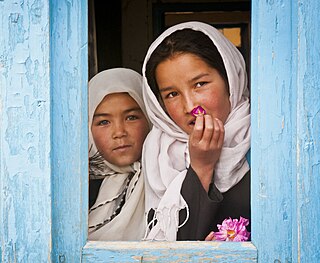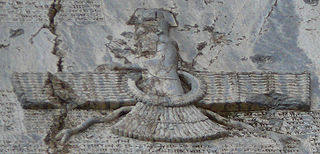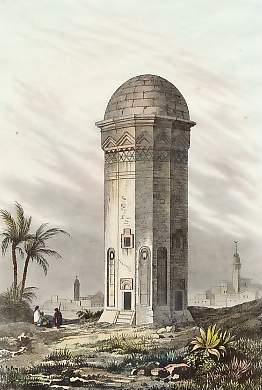Related Research Articles

The Hazaras are an ethnic group and a principal component of the population of Afghanistan, native to Afghanistan, Pakistan, and Iran. They are one of the largest ethnic groups in Afghanistan and primarily residing in the Hazaristan (Hazarajat) region in central Afghanistan, as well as a significant minority groups mainly in Quetta, Pakistan and Mashhad, Iran. They speak the Dari and Hazaragi dialects of Persian. Dari, also known as Dari Persian, is one of two official languages of Afghanistan.
The Persians are an Iranian ethnic group who comprise over half of the population of Iran. They share a common cultural system and are native speakers of the Persian language as well as of the languages that are closely related to Persian.

Pashtuns, also known as Pakhtuns, or Pathans, are a nomadic, pastoral, Eastern Iranic ethnic group primarily residing in northwestern Pakistan and southern and eastern Afghanistan. They historically were also referred to as Afghans until the 1970s, after the term's meaning had become a demonym for members of all ethnic groups in Afghanistan.

The Baloch or Baluch are a nomadic, pastoral, ethnic group which speaks the Western Iranic Baloch language and is native to the Balochistan region of South and Western Asia, encompassing the countries of Pakistan, Iran, and Afghanistan. There are also Baloch diaspora communities in neighbouring regions, including in Central Asia, and the Arabian Peninsula.
The Dom are descendants of the Dom caste with origins in the Indian subcontinent which through ancient migrations are found scattered across the Middle East and North Africa, the Eastern Anatolia Region, and parts of the Balkans and Hungary. The traditional language of the Dom is Domari, an endangered Indo-Aryan language, thereby making the Dom an Indo-Aryan ethnic group.

Sardar, also spelled as Sardaar/Sirdar, is a title of royalty and nobility that was originally used to denote princes, noblemen, chiefs, kings and other aristocrats. It has also been used to denote a chief or leader of a tribe or group. It is used as a Persian synonym of the title Emir of Arabic origin.

Greater Iran or Greater Persia, also known as Persosphere, is a sociocultural region in which Iranian traditions and Iranian languages have had a significant impact. It spans parts of West Asia, the Caucasus, Central Asia, South Asia, and parts of East Asia, specifically Xinjiang, China. The region is defined by having been long-ruled by the dynasties of various Iranian empires, under whom the local populaces gradually incorporated some degree of Iranian influence into their cultural and/or linguistic traditions; or alternatively as where a considerable number of Iranian peoples settled to still maintain communities who patronize their respective cultures, geographically corresponding to the areas surrounding the Iranian plateau. It is referred to as the "Iranian Cultural Continent" by Encyclopædia Iranica.
The Kawliya, Qawliya or Awaz, Keche-Hjälp, also known as Zott and Ghorbati, is a community in Iraq of Indian origin, estimated to number over 60,000 people. Today, they speak mostly Arabic, while their ethnolect is a mixture of Persian, Kurdish and Turkish, which only spoken by the older generations. The largest tribes are the Bu-Baroud, Bu-Swailem, Bu-Helio, Bu-Dakhil, Bu-Akkar, Bu-Murad, Bu-Thanio, Bu-Shati, Al-Farahedah, Al-Mtairat, Bu-Khuzam, Bu-Abd, Bu-Nasif, Bu-Delli and Al-Nawar. Their main occupation is entertainment, and also small trades.
Pashtun diaspora comprises all ethnic Pashtuns. There are millions of Pashtuns who are living outside of their traditional homeland of Pashtunistan, a historic region that is today situated over parts of Afghanistan and Pakistan. While the (erstwhile) Pashtunistan is home to the majority of Pashtun people, there are significant local Pashtun diaspora communities scattered across the neighbouring Pakistani provinces of Sindh and Punjab, particularly in their respective provincial capital cities of Karachi and Lahore. Additionally, people with Pashtun ancestry are also found across India; particularly in Rohilkhand, a region in the Indian state of Uttar Pradesh; and in the Indian states of Gujarat and Rajasthan. Outside of South Asia, significant Pashtun diaspora communities are found in the Arab states of the Persian Gulf, the United States, the United Kingdom, Germany, Iran, Australia, Canada, and Russia.

The Lyuli, Jughi or Jugi are a branch of the Ghorbati people living in Central Asia, primarily Tajikistan, Uzbekistan, Turkmenistan, Kazakhstan, and southern Kyrgyzstan; also, related groups can be found in Turkey, and the Balkans, Crimea, Southern Russia and Afghanistan. They speak ethnolects of the Persian and Turkic language and practice Sunni Islam. The terms Lyuli and Jugi are considered pejorative. They have a clan organization. Division into sub-clans is also practiced. The Lyuli community is extremely closed towards non-Lyuli.

Afghanistan is a multiethnic and mostly tribal society. The population of the country consists of numerous ethnolinguistic groups: mainly the Pashtun, Tajik, Hazara, and Uzbek and minorities of Aimaq, Turkmen, Baloch, Pashai, Nuristani, Gujjar, Brahui, Qizilbash, Pamiri, Kyrgyz, Sadat, and others. Altogether they make up the Afghan people.
Nawar is an Arabic term for several nomad communities used primarily in Jordan, Syria, Lebanon, and Palestine. The term, regarded as derogatory, is used by Arabs for several diverse ethnic groups. They have historically been called "Gypsies", though as a whole they are not Romani per se. The Dom people are especially known as Nawar. While both they and Romani people originated from India, they came from two drastically different ethnicities and cultures.

Ethnic groups in the Middle East, in the 'transcontinental' region which is commonly a geopolitical term designating the intercontinental region comprising West Asia without the South Caucasus, and also comprising Egypt in North Africa. The region has historically been a crossroad of different cultures and languages. Since the 1960s, the changes in political and economic factors have significantly altered the ethnic composition of groups in the region. While some ethnic groups have been present in the region for millennia, others have arrived fairly recently through immigration. The largest socioethnic groups in the region are Arabs, Turks, Persians, Kurds, and Azerbaijanis but there are dozens of other ethnic groups that have hundreds of thousands, and sometimes millions of members.

The Iranian peoples or Iranic peoples are a diverse grouping of peoples who are identified by their usage of the Iranian languages and other cultural similarities.
The Romani people are also known by a variety of other names; in English as gypsies or gipsies, and Roma; in Greek as γύφτοι (gíftoi) or τσιγγάνοι (tsiggánoi), in Central and Eastern Europe as Tsingani ; in France as gitans besides the dated terms bohémiens and manouches; in Italy as rom and sinti besides the dated terms zingari, zigani, and gitani; in Spain as gitanos; and in Portugal and Brazil as ciganos.
There are several ethnic groups in Afghanistan which traditionally lead a peripatetic life. This means they are nomadic and their main occupations centre around providing services to the settled populations they travel among, like peddling particular goods or performing music. In this way, they contrast both with the settled population and with the pastoralist nomads. They are of low social status and are known to outsiders as Jats, a derogatory term that none of the groups use as a self-designation.
Persian Romani, also known as Ghorbati (Qorbati), Magadi (Mogadi), Qazulagi and Jogigi, Lafzi Mugat or Arabi/Arabcha in Central Asia, refers to various argots, spoken by the Ghorbati and closely related peoples, often called “Persian Gypsies” or “Central Asian Gypsies”. There is no proof of any historical connection between any of these peripatetic groups and the Roma or Dom peoples, except for the fact that some use a few words that are apparently of Domari origin. These argots are related to Lotera’i, or Judeo-Persian.
The Dom or Ghagar people migrated to the territory of the present day Egypt from South Asia, particularly from Indian Subcontinent, and heavily intermixed with Egyptians. Scholars suggest that their Egyptian admixture later made them known around the world by the vernacular term Gypsies, deriving from the word "Egyptian." Though some of the Dom people self-segregated themselves for centuries from the dominant culture of Egypt, historically; Domari in Egypt have intermixed with Egyptians and participated at local musical entertainment at weddings, circumcisions and other celebrations, singing Egyptian traditional songs and dance in return for money. The Dom people in Egypt or Roma Egyptians include subgroups like Nawar, and Ghagar (ghaggar). The Dom in Egypt are Sunni Muslims and speak Egyptian Arabic also their own Domari language together.

Turkoman, also known as Turcoman, was a term for the people of Oghuz Turkic origin, widely used during the Middle Ages. Oghuz Turks were a western Turkic people that, in the 8th century A.D, formed a tribal confederation in an area between the Aral and Caspian seas in Central Asia, and spoke the Oghuz branch of the Turkic language family.
Romani people in Iran may refer to:
References
- 1 2 3 FREDRIK BARTH (1961). NOMADS OF SOUTH PERSIA. p. 91.
- 1 2 John Middleton (1995). Africa and the Middle East. G.K. Hall Company. p. 106. ISBN 978-0-8161-1815-1.
- ↑ International Encyclopedia of Linguistics. Oxford University Press. 2003. p. 291. ISBN 978-0-19-513977-8.
- ↑ Roma. Vol. 4. Roma Publications. 1978. p. 43.
- ↑ Aparna Rao; Michael J. Casimir (2003). Nomadism in South Asia. Oxford University Press. p. 60. ISBN 978-0-19-565745-6.
- ↑ Phillips, David J. (December 12, 2001). Peoples on the Move: Introducing the Nomads of the World. William Carey Library. ISBN 978-0-87808-352-7 – via Google Books.
- ↑ R. Khanam (2005). Encyclopaedic ethnography of Middle-East and Central Asia. Global Vision Publishing House. p. 643. ISBN 978-81-8220-065-4.